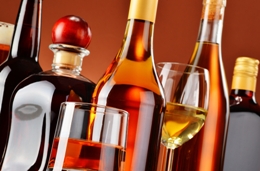19 December 2014
 With most of us preparing to kick back and party over summer, UniSA pharmacology lecturer, Professor Jason White, is sounding a holiday warning to put brakes on our alcohol use.
With most of us preparing to kick back and party over summer, UniSA pharmacology lecturer, Professor Jason White, is sounding a holiday warning to put brakes on our alcohol use.
Prof White says one of the biggest health risks over the holiday period is alcohol overuse.
“People need to make more effort to keep track of how much they’re drinking,” he says.
Prof White says alcohol affects everyone differently, based on their body size and health, whether they’re used to it, whether they’re using it with other drugs and the amount and strength of the alcohol consumed.
“The main risk is drinking and driving but there is significant risk from alcohol and swimming too,” Prof White says.
If you’re driving, the law demands that you stay below 0.5 in your Blood Alcohol Concentration (BAC). Prof White advises…
• an average sized man to drink no more than two standard drinks in the first hour and one per hour after that. Over the long term, drinking more than four standard drinks per session is also bad for health.
• an average sized woman should drink no more than one standard drink per hour.
He says a standard drink is 10 grams of alcohol, but it can be hard to work out standard drinks because different alcoholic drinks contain different proportions of alcohol per volume and different glass sizes are used in different settings.
“For these reasons it can be a lot more difficult to keep track of how much alcohol you are consuming and in party situations or at functions where people are constantly topping up drinks, it gets harder still,” Prof White says.
“A useful approach is to make the switch – alternate between soda water or soft drink and alcohol.
“Try to drink with food rather than on an empty stomach and space drinks out a bit more.”
He also warns against drinking and swimming or boating.
“Drinking alcohol before you go swimming or boating can impair your judgment, slow reaction times and can result in greater risk-taking behaviours and can result in serious accidents and more incidence of drowning.”
According to the Royal Life Saving Society’s National Drowning report of 2012, alcohol was most likely to be a factor in drowning deaths of people aged 55-64 years, followed by 18-24 year olds, 35-44 year olds and 45-54 year olds.
“People know that too many drinks can leave them vulnerable – vulnerable to arguments, to accidents, to injuring others and to making themselves sick,” Prof White says.
“A little bit of mindful alcohol management over the holidays from people attending parties and events and those hosting them could prevent a lot of heartache.”
Media contact: Michèle Nardelli office: +61 8 8302 0966 mobile: 0418 823 673 email: michele.nardelli@unisa.edu.au


